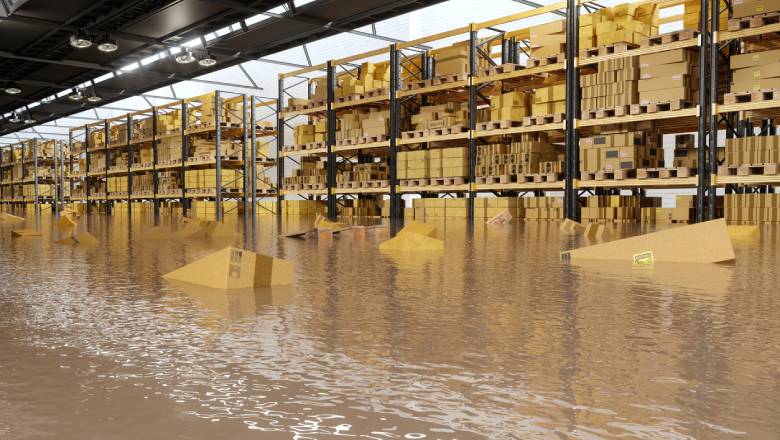Climate change security hazards to increase by double-digits as companies urged to prepare

Businesses must prepare for a double-digit increase in climate change hazards that impact physical security in the next year and could threaten supply chains, people and finances, according to G4S’s World Security Report.
Almost two-fifths (38%) of companies surveyed expect it to impact their company in the next 12 months - an increase of 11% on the previous year. The warning comes as the COP28 climate conference continues in the UAE.
1,775 Chief Security Officers (CSOs) in 30 countries at large global companies with total revenue of more than $20 trillion took part in the first-ever World Security Report.
Climate change is the third most likely security-impacting hazard to affect companies in the next year after economic unrest (47%) and pandemics (40%).
CSOs also anticipate that floods, wildfires, earthquakes, landslides and tsunamis will all increase.
Noah Price, International G4S Academy Director said: “Climate change and natural disasters pose a significant threat to a company's physical security operations. Most companies tend to be reactive, addressing security threats only after they've struck. It’s business critical that CSOs anticipate potential threats and prepare for them. No action or just reaction is not an option.
“Being reactive often results in significantly higher financial and reputational losses compared to the costs of implementing robust, preemptive security measures. Planning will ensure businesses are more resilient, safeguarding people and assets.”
What do businesses need to do?
One of the most pragmatic security plans G4S advises is climate-specific risk assessments of places of work, operational locations and where employees reside. This should be regularly reviewed and updated.
“In light of the wildfires we witnessed around the world, it's imperative business leaders ask themselves: have we evaluated the risk of such events recurring? Have we proactively installed measures like sprinkler systems or perimeter defences to mitigate future threats? Beyond physical infrastructure, it's crucial to consider the human element – how do such events impact our employees, their families, and their ability to work?" Price emphasised.
Businesses should invest in infrastructure that can withstand extreme weather events. Buildings that are reinforced, have flood protection systems, and fire-resistant materials will lessen the impact.
Companies are facing up to US$120 billion in costs from environmental risks in their supply chains within the next five years*. If supply chains are strategically diversified, threats to one region are less likely to affect production, manufacturing or commerce - reducing the overall impact on business productivity.
Mike Maltezakis, G4S Academy Supply Chain Specialist, said: “Recent droughts in the Panama Canal, flash flooding and extreme wildfires have highlighted the fragility of supply chains. The need for them to be resilient and as diverse as possible are increasingly necessary.
“If you’re an e-commerce business, a supply chain disruption like the Panama Canal drought has the potential to be not only costly, but leaves you and your products vulnerable to theft. You could have millions of pounds worth of product sat in cargo that an Organised Crime Group (OCG) looks to take advantage of. And with droughts in the canal more likely, so is the likelihood that an OCG bases itself nearby because they see a recurring opportunity. The biggest security threat with this is that they use violence against staff and crew members to take what they want.
“Having varied supply chain options means companies are less at risk of being over-reliant on certain suppliers.”
Predictive and aerial technology will be key to assess the risks, damage and enable key strategic decision-making.
Over the next five years, 42% and 39% of World Security Report respondents are planning to use AI and machine learning, and IoT devices in their physical security operations, respectively. Almost a quarter (24%) will use drones and unmanned aerial systems (UAS)
AI and machine learning can be used for predictive analytics when looking at climate-related risks. For instance, AI can analyse vast amounts of data from past weather patterns, satellite imagery, and climate models to predict natural disasters with greater accuracy, enabling timely preventive measures.
IoT, in real-time, can monitor environmental conditions. Strategically placed devices can monitor factors like water levels, soil moisture, or air quality and send instant alerts flagging abnormal readings, which can indicate impending floods, droughts, or other climate threats. Unmanned Aerial Systems, i.e. drones and satellites, can assess the impact of climate events on infrastructure. Drones can provide aerial views of affected areas, helping businesses assess damage quickly and plan their response effectively.
Concluding, Price said: “Businesses have a vital role to play in reducing climate change, but also in keeping their operations running, people and assets safe, and protecting themselves from a wide-range of climate threats. ”
About the World Security Report 2023
This landmark research is an independent, anonymous survey of 1,775 chief security officers (CSOs), or those in equivalent roles, from large, global companies in 30 countries, with a combined annual revenue of more than $20 trillion in 2022, representing a quarter of the world’s total Gross Domestic Product (GDP). To view and download the World Security Report 2023, visit: https://worldsecurityreport.com*According to CDP's Global Supply Chain Report 2020
